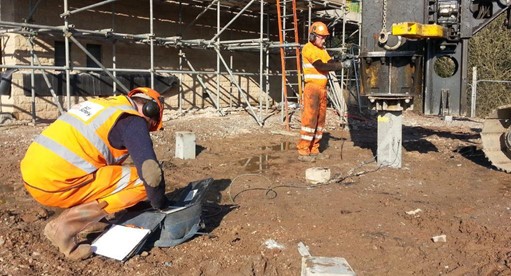Over the past 40 years Dynamic Testing has become an accepted method of predicting pile performance, assessing pile integrity and confirming design parameters.

Dynamic testing is a technique which assesses the bearing capacity or load carrying characteristics of a single installed foundation pile.
What is Dynamic Testing used for?
Dynamic Testing involves the measurement of force (F) and velocity (v) at the head of the pile. Typically this is carried out after installation by instrumenting the pile with strain gauges and accelerometers.
Dynamic load tests are carried out by striking the pile with a hammer. As a result of the hammer impact, it induces a compressive stress wave which travels down the pile with a constant wave speed (c). It then reflects upward traveling compression and tension waves due to changes in pile and soil properties which are measured at the head of the pile.
Then by striking the pile with a drop hammer, the force and velocity at the pile head can be measured. Using stress wave theory, the measurements are analysed to predict the pile bearing capacity. Further computer analysis using CAPWAP software yields a variety of pile performance data. Including shaft resistance distribution, end bearing and static load v deflection data.
We provide an extensive range of ground investigation services. In order to discuss our services in more detail, please contact our specialist Stata Geotechnics team.

